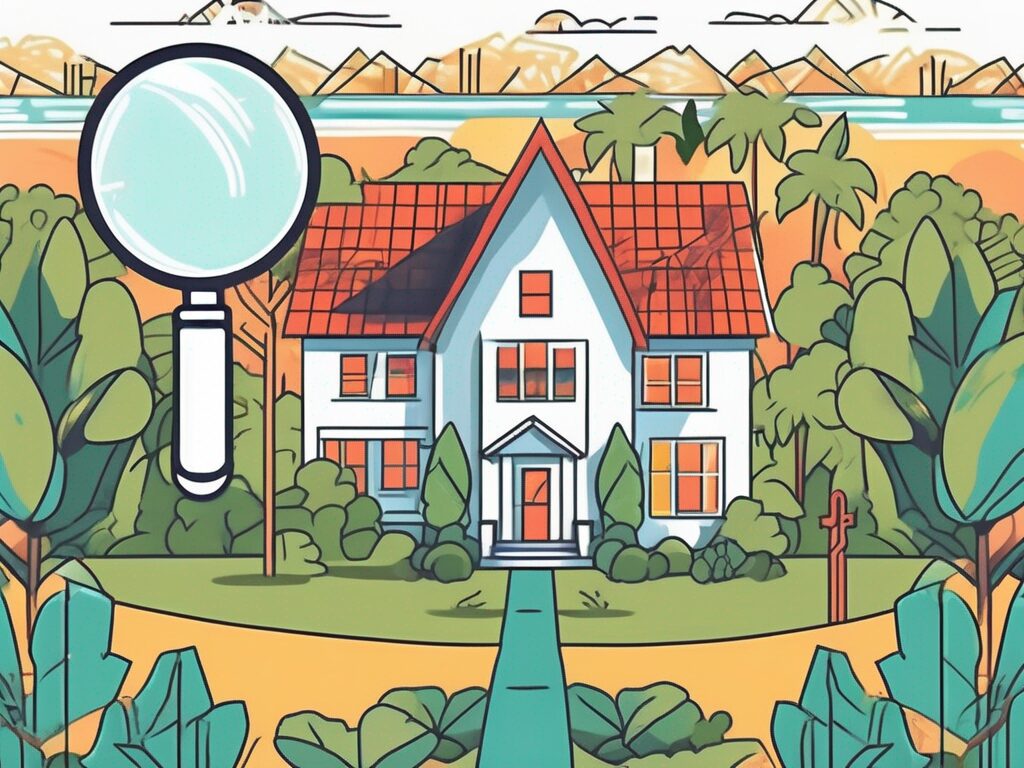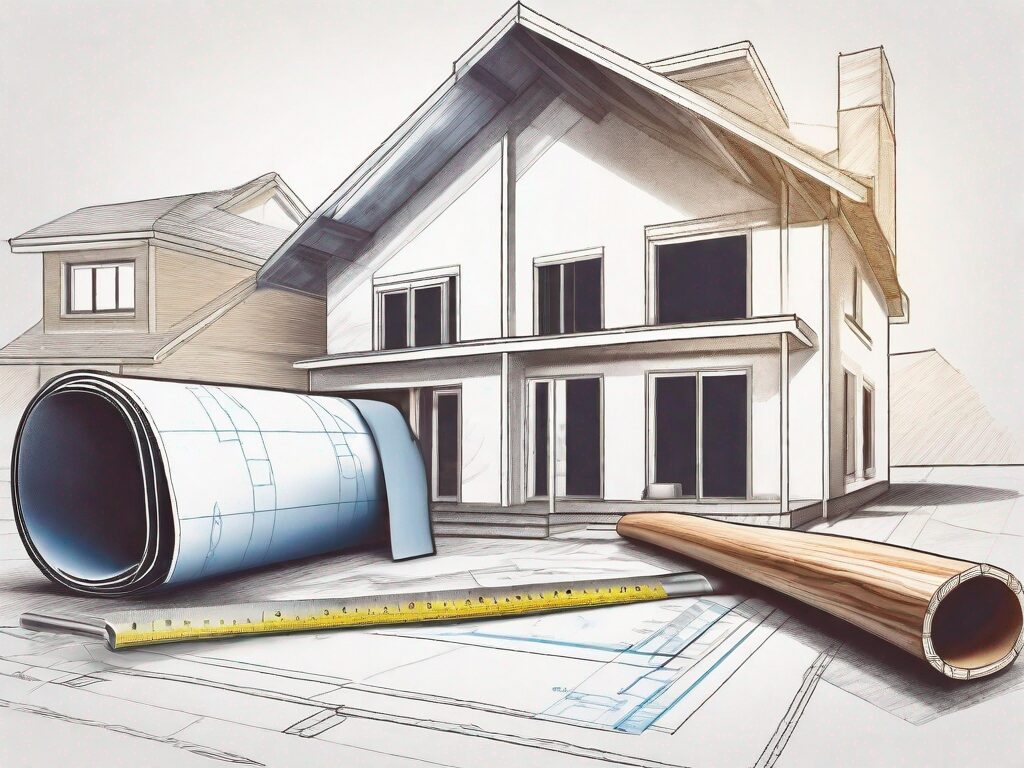
Agent A-Team or Solo Superhero? Finding the Right Real Estate Partner for Your Selling Journey in Wildwood Florida
When it comes to selling your home in Wildwood, Florida,…
January 29, 2024
If you’re in the market for a new home or looking to renovate your current property, you may have come across the term “Fannie Mae HomeStyle loans.” But what exactly are these loans, and how do they work? In this comprehensive guide, we’ll break down everything you need to know about Fannie Mae HomeStyle loans, from understanding their mechanics to eligibility criteria and down payment requirements. Let’s get started!
When it comes to financing home renovations or purchasing a property that needs some TLC, a Fannie Mae HomeStyle loan can be a viable option. These loans are designed to help borrowers finance both the purchase price and the cost of renovations in a single mortgage. This means you can buy a fixer-upper and have the funds to turn it into your dream home.
But how exactly does a Fannie Mae HomeStyle loan work? Let’s take a closer look.
The process of obtaining a Fannie Mae HomeStyle loan can be broken down into several key steps. First, you’ll need to find a lender who offers these types of loans and determine if you meet the eligibility criteria. This is an important step because not all lenders offer HomeStyle loans, so it’s crucial to do your research and find a lender who specializes in this type of financing.
Once you’ve found a lender, you’ll need to gather all the necessary documentation to support your loan application. This may include recent pay stubs, tax returns, bank statements, and a list of your assets and liabilities. The lender will review this information to assess your financial situation and determine if you qualify for a HomeStyle loan.
If you meet the eligibility criteria and are pre-approved for a HomeStyle loan, you can start shopping for your dream property. This is an exciting part of the process as you can envision the potential of turning a fixer-upper into your dream home. It’s important to keep in mind that not all properties are eligible for a HomeStyle loan, so you’ll need to work closely with your lender to ensure the property meets the necessary requirements.
Once you’ve found a property, you’ll work with your lender to determine the expected cost of renovations. This will help determine the loan amount you can qualify for. The lender will then evaluate your financial situation, including your credit score, income, and debt-to-income ratio, to determine your ability to repay the loan.
Once you’ve been approved for the loan, the funds will be disbursed to you or a designated contractor. This is when the real fun begins – the renovation process. Whether it’s updating the kitchen, adding a new bathroom, or giving the entire property a fresh coat of paint, the HomeStyle loan allows you to finance these improvements.
It’s important to note that there are rules and guidelines that must be followed when using a Fannie Mae HomeStyle loan, so it’s crucial to work closely with your lender to ensure compliance. For example, the renovations must be completed by licensed contractors, and the funds must be used solely for the approved improvements.
Once the renovations are complete, you’ll have a beautiful, updated home that meets your needs and preferences. The Fannie Mae HomeStyle loan offers borrowers the opportunity to turn a fixer-upper into a dream home, all while financing the purchase and renovations in a single mortgage.
In conclusion, a Fannie Mae HomeStyle loan can be a great option for those looking to purchase a property in need of renovations. By understanding the mechanics of this loan and working closely with a knowledgeable lender, you can turn your fixer-upper into the home of your dreams.
Now that you have a better understanding of how Fannie Mae HomeStyle loans work, it’s time to explore the options available to you. Finding the right lender is essential for a smooth and successful loan process. Here are some tips to help you find the right lender for your Fannie Mae HomeStyle loan:
When researching lenders for your Fannie Mae HomeStyle loan, it’s important to take your time and thoroughly evaluate your options. Start by looking for lenders who specialize in these types of loans. These lenders will have a deep understanding of the program and can guide you through the process with ease.
Once you have a list of potential lenders, it’s time to compare their interest rates and loan terms. Interest rates can vary significantly between lenders, so it’s crucial to find the best rate for your financial situation. Additionally, pay attention to the loan terms, such as the length of the loan and any fees associated with it. These factors can impact the overall cost of your loan.
While online research is a great starting point, don’t underestimate the power of personal recommendations. Reach out to friends, family, or real estate professionals who have recently gone through the Fannie Mae HomeStyle loan process. They can provide valuable insights and recommend lenders they had a positive experience with.
Customer service is another important aspect to consider when choosing a lender. A lender who values customer service will be responsive to your inquiries and provide clear and helpful information throughout the loan process. Look for lenders who are willing to answer your questions and address any concerns you may have.
Remember, finding the right lender for your Fannie Mae HomeStyle loan is a crucial step towards achieving your homeownership goals. Take the time to research, compare, and ask for recommendations to ensure you find a lender who will provide the best terms and service for your needs.
Before diving into the world of Fannie Mae HomeStyle loans, it’s essential to understand the eligibility criteria. These loans have certain requirements that borrowers must meet. Let’s explore some of the key eligibility criteria:
First and foremost, borrowers must have a good credit score. Lenders typically look for a credit score of at least 620, although some may require a higher score for approval. A good credit score demonstrates a borrower’s ability to manage their finances responsibly and increases their chances of loan approval.
Another important eligibility criterion is the borrower’s debt-to-income ratio (DTI). This ratio compares a borrower’s monthly debt payments to their monthly income. Lenders generally prefer a DTI ratio of 36% or lower, although some may be more flexible depending on the borrower’s overall financial profile.
Furthermore, borrowers must have a stable source of income. Lenders want to ensure that borrowers have the means to repay the loan. This can be demonstrated through pay stubs, tax returns, and other financial documents. Self-employed individuals may need to provide additional documentation to verify their income.
Fannie Mae HomeStyle loans can be used to finance various types of properties. These include:
It’s important to note that not all properties will qualify for a Fannie Mae HomeStyle loan. Certain restrictions and guidelines exist regarding the condition and use of the property.
For example, the property must be a primary residence, a second home, or an investment property. It cannot be a property solely used for commercial purposes. Additionally, the property must meet certain minimum property standards set by Fannie Mae, ensuring that it is safe and habitable.
Furthermore, borrowers may need to work with a licensed contractor to create a detailed renovation plan for the property. This plan should outline the scope of work, estimated costs, and a timeline for completion. The lender will review this plan to ensure that the renovations are feasible and will add value to the property.
Working with your lender will help determine if the property you are interested in meets these requirements. They will assess the property’s eligibility based on its location, condition, and intended use. It’s crucial to have open and transparent communication with your lender to fully understand the eligibility criteria and make an informed decision.
A common concern among borrowers is the down payment requirements for Fannie Mae HomeStyle loans. Let’s take a closer look at how much down payment you’ll need for this type of loan:
The down payment requirements for a Fannie Mae HomeStyle loan vary depending on several factors, including your creditworthiness and the type of property you’re financing. In general, you can expect to make a down payment of at least 5% of the total loan amount. However, it’s recommended to consult with your lender for an accurate assessment of your specific situation.
When determining the down payment requirement for a Fannie Mae HomeStyle loan, lenders take into consideration various factors such as your credit score, income stability, and the appraised value of the property. These factors help lenders assess the level of risk associated with the loan and determine the appropriate down payment amount.
It’s important to note that the down payment requirement may vary depending on the type of property you’re financing. For example, if you’re purchasing a single-family home, the down payment requirement may be different compared to financing a multi-unit property or a condominium. Lenders consider the type of property and its associated risks when determining the down payment amount.
In addition to the down payment, borrowers should also be aware of other costs associated with obtaining a Fannie Mae HomeStyle loan. These costs may include closing costs, appraisal fees, and any necessary repairs or renovations that need to be completed on the property. It’s essential to factor in these additional expenses when planning for your down payment.
Furthermore, borrowers with a higher credit score and a strong financial profile may be eligible for more favorable down payment terms. Lenders often offer lower down payment requirements to borrowers who demonstrate a lower risk of defaulting on the loan. Therefore, it’s crucial to maintain a good credit score and a stable financial history to increase your chances of obtaining a lower down payment requirement.
Lastly, it’s always recommended to consult with a knowledgeable lender who specializes in Fannie Mae HomeStyle loans. They can provide you with personalized guidance and help you navigate through the down payment requirements and other aspects of the loan process. By working closely with a lender, you can ensure that you have a clear understanding of the down payment requirements and make informed decisions regarding your home financing.
After exploring the mechanics, eligibility criteria, and down payment requirements of Fannie Mae HomeStyle loans, the question remains: Is this type of loan right for you? The answer depends on your individual circumstances and goals. If you’re considering purchasing a fixer-upper or need funds for extensive home renovations, a Fannie Mae HomeStyle loan can be an excellent choice. However, it’s crucial to research, compare lenders, and seek professional advice to make an informed decision.
When it comes to purchasing a fixer-upper, a Fannie Mae HomeStyle loan offers numerous advantages. Not only does it provide the funds needed to purchase the property, but it also includes additional funds for renovations. This means that you can finance both the purchase and the renovation costs in a single loan, simplifying the financing process.
Furthermore, the flexibility of a Fannie Mae HomeStyle loan allows you to customize your home according to your preferences and needs. Whether you want to update the kitchen, add an extra bedroom, or create an outdoor living space, this loan program provides the financial means to turn your vision into reality.
However, it’s important to note that obtaining a Fannie Mae HomeStyle loan is a significant financial commitment. Before proceeding, take the time to weigh the pros and cons. Consider factors such as your budget, the potential return on investment, and the overall cost of the renovations. Conducting a thorough cost-benefit analysis will help you determine if this loan is the right choice for you.
Additionally, researching and comparing lenders is essential when considering a Fannie Mae HomeStyle loan. Different lenders may offer varying interest rates, loan terms, and fees. By shopping around and obtaining multiple quotes, you can ensure that you secure the most favorable terms and conditions for your loan.
Seeking professional advice is also highly recommended. A mortgage broker or loan officer can provide valuable insights and guidance throughout the loan application process. They can help you understand the eligibility requirements, navigate the paperwork, and answer any questions you may have. Their expertise will ensure that you make an informed decision and choose the right loan for your specific needs.
In conclusion, a Fannie Mae HomeStyle loan can be a fantastic option for those looking to purchase a fixer-upper or undertake extensive home renovations. With the ability to finance both the purchase and renovation costs in a single loan, this program offers convenience and flexibility. However, it’s crucial to carefully consider your individual circumstances, conduct thorough research, compare lenders, and seek professional advice. By doing so, you can confidently move forward and achieve your homeownership and renovation dreams with a Fannie Mae HomeStyle loan.

If you want the Richr team to help you save thousands on your home just book a call.
 Book a call
Book a call